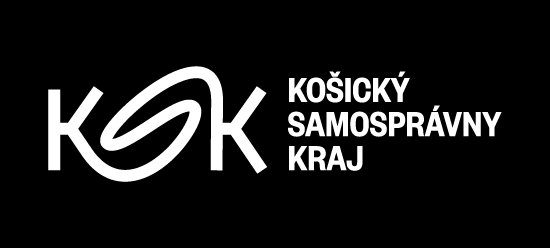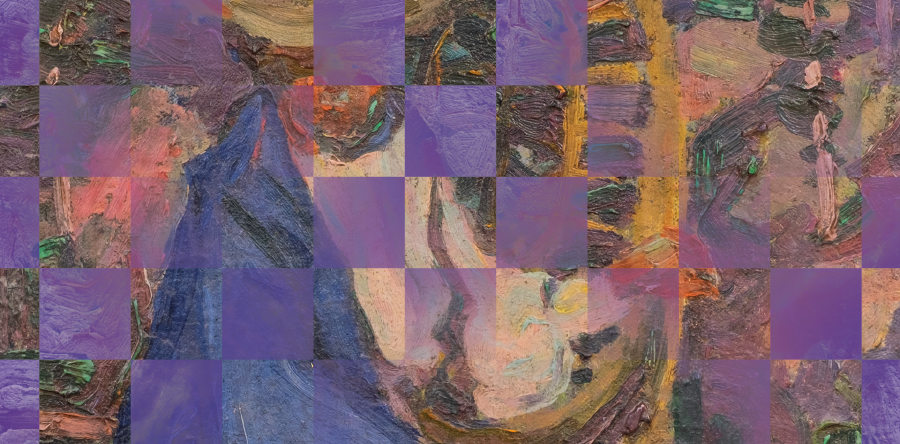Opening: 14. 5. 2024 at 6 pm
Exhibition duration: 15. 5. 2024 – 20. 10. 2024
Curators: Viera Ballasch Dandárová, Katarína Nádaská
Exhibition space C, Hlavná 27, Košice
You will experience restoration by touch – you can click through four interactive tactile games, four educational activities, four tactile reliefs and four collections of artworks which create the exhibitional project "Saved by touch". Along with the interactive and educational element, the exhibition has a strong art-historical dimension, which forms its thematic interpretation and links all four parts into one whole. The interactive exhibits come from previous exhibition projects of the East Slovak Gallery. Each of them looks at the artwork in a distinctive way while attempting to bring closer its context and the reason why it ended up in the hands of a restorer. The art-historical dimension of the works is therefore intertwined with the technical and restoration aspect and the educational and interactive experience. The interpretation of the exhibition puts the artworks in the role of narrators not only of the artistic past, but above all of the themes of the present while conveying the work of the gallery and the management of its collections. In so doing, it connects the world of the visitors with that of the gallery, inviting them to experience, play and ask questions. The exhibition is equally a testimony to the projects, experiences and relationships the gallery has acquired over the past years, during which time the works have been restored, digitalised and presented with the aim of making them accessible. Currently they are presented to the widest possible audience, young people, the disabled and families.
The first of the four sections of the exhibition is named “Rituals of Our Lives”. Subtly and over time, ordinary daily repetitive tasks become our rituals that make us feel comfortable and safe. We have been familiar with rituals since prehistoric times. They are associated with protection, invocations of various deities or healing. Their common link is the space of the cave, which has served as a first dwelling, a place of shelter, a tourist attraction or a healing centre since time immemorial. It is the work by Ignác Klimkovič, In the Dripstone Cave, converted into a tactile, playful interactive form and also into a relief that can be explored by touch by all visitors, offers themes such as the change of the natural landscape through time, the first dwellings and prehistoric creatures (Štefan Prukner, Where to Look for the Coast, 1966) and the emergence of tourism.
The section entitled “Struggle for Power” is represented by a work by Imrich Greguš entitled “Recruitment”. It takes us back to the period of unrest before the First World War in Europe, where various political conflicts piled up over time, creating tensions that culminated in the war between the world powers. The sense of fear, insecurity, and hatred – inspired by propaganda campaigns based largely on unsubstantiated and unverified information – does not bring any benefit. The works of art in the exhibition often bear witness (through their creators) to the times in which they were created or were intended to represent. Tatar raids (Margita Balšianková, Tales from the Ancient Times, 1984), the First and Second World War periods, the occupation of Czechoslovakia, the Cold War and the omnipresent atomic threat (Orest Dubay, No! I., 1978), and the artist as a frontline painter and courageous witness of the era – these are the themes that will speak through the works in the second part of the exhibition. Through the section “Cultural heritage, which will be left behind” we address the need to protect, restore and preserve works of art. The profession of restoration is generally not very well known. In my experience as a teacher, it happens that the demanding and professional occupation of restoration is confused with working in a restaurant. The work “The Lady” by Konštantín Kövári-Kačmarik was unrecognisable and seriously damaged before its restoration. In the exhibition we can already see the meticulously restored work by Ľudmila Zozuľáková, who has brought about 80 works back to life in the course of 6 years. These were damaged by a fire in the gallery in 1985.
Through the work “The Lady”, the third section of the exhibition focuses not only on the necessary preservation and presentation of cultural heritage, but also on the dressing of ladies over a span of roughly 150 years. The motif of the woman and her appearance is well represented in the collections of the East Slovak Gallery.
The last section of the exhibition, titled “Willpower”, is therefore also dedicated to women. The work “Madonna of Ruskinovce” by an unknown Spiš carver from the period around 1300 is a depiction of the Virgin Mary with her son Jesus in her arms. The image of mother and child has remained almost the same throughout the centuries while conveying a message about the power of women. The strength of her will overcomes obstacles. She combines tenderness and perseverance to actively change the world for the better. Attributes of life, work, beauty, but also suffering and sacrifice compose the mosaic of women in the visual arts from medieval carvers to contemporary painters. The beginning of almost every human life is associated with the tender touch of a mother’s hands, an embrace and a protective nest (Albín Brunovský, Praise of Tangled Dreams VI., 1985) in which we grow up. But women’s attributes change throughout their lives. Sometimes they are inevitable and conditioned by the environment in which they grow up, such as the attribute of the iron (Juraj Collinásy, While Ironing, 1953), the wooden spoon, agricultural working tools, or the expressive strong hands themselves, which women employ in hard work (Anton Jasusch, The Motif of Work, 1958 – 1960). Sometimes women’s attributes are expressions of willpower and the need to be educated, to have insight and to look critically at the social situation then and now – this is primarily materialised in the attribute of a book. The rose as an attribute of St. Elizabeth and the patroness of Košice concludes the last circle of the exhibition.
Through the protection of cultural heritage and its preservation for future generations, the restoration of works damaged by fire in the gallery in 1985 and the arduous and lengthy work of the restorers, the exhibition opens the door to the world of the restoration studios and allows us to see the artworks through a different lens. Artworks’ backsides, damaged parts and uncovered layers hide many interesting stories, which we can get to know through the interactive and educational exhibition “Saved by Touch”.
Part of the exhibition is the East Slovak Gallery app, where you can learn more about the main artworks by scanning QR codes directly in the exhibition or from the comfort of your own home. We also offer a version of the app in English. For the older generation and the visually impaired, we have prepared an exhibition manual, which is available in two languages at the entrance to the exhibition. Touch facsimiles of the medieval saints Barbara and Catherine and reliefs of main works placed on tilted pedestals with Braille are created not only for blind visitors, they can be explored by touch by everyone. The online guide “Saved by Touch” is designed for students and is freely available for download directly from the gallery’s website. It will enhance the teaching process and can be used when working with the interactive whiteboard.
Exhibited authors:
Alexay-Olexák Emil, Andrássy Emanuel, Aranyossy Ákos, Balšianková Margita, Bauer Konštantín, Blažo František, Bortnyik Alexander, Brunovský Albín, Bugan Alexander, Collinásy Juraj, Czölder Dezider, Dubay Orest, Ďurišin Igor, Eckerdt Alexander, Fulierová Kvetoslava, Gáll Tibor, Greguš Imrich, Halász-Hradil Elemír, Hostiňák Bogdan, Ivan Ondrej, Jakoby Július, Jasusch Anton, Klimkovič František, Klimkovič Ignác, Klimkovič Vojtech, Kövári-Kačmarik Konštantín, Krón Eugen, Meadows Kenny, Mousson Teodor Jozef, Müller Ján Jakub, Pernica Vojtech, Prukner Štefan, Sabol Jozef, Sirka Boris, Spannerová Edita, Spoločníková Mária (Majster Pavol z Levoče), Šipoš Vojtech, Török Július, Veselý František
The exhibition “Saved by Touch” is supported by the Slovak Arts Council.



